CAD-embedded advanced mechanical simulation
Autodesk® Nastran® In-CAD™ software, a CAD-embedded general purpose finite element analysis (FEA) tool powered by the Autodesk® Nastran® solver, offers a wide range of simulation for multiple analysis types. As part of the Autodesk Digital Prototyping solution, it delivers high-end simulations to help engineers and analysts make great products.
Autodesk Nastra In-CAD Features
FEA software with CAD integration
Autodesk® Nastran® In-CAD™ finite element analysis (FEA) software uses the Autodesk Nastran solver and integrates with compatible software to simulate real-world behavior in real time. View video to see how you can test linear statics and responses before you build begin manufacturing.

Autodesk Nastran solver
The Autodesk Nastran solver offers robust analysis capabilities, including composites, advanced dynamics, nonlinear, and heat transfer, in addition to the traditional linear statics and normal modes. Results accuracy is routinely tested against NAFEMS standards and over 5,000 additional verification benchmarks.
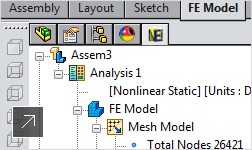
SolidWorks integration
Amplify the power of Autodesk Nastran In-CAD FEA software in the SolidWorks environment.

Inventor integration
Extend the capabilities of Autodesk Nastran—use it with Inventor 3D CAD software.

Intelligent meshing (associativity)
Tight integration between CAD model and mesh ensures that analysis is always up to date.
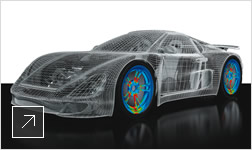
Linear statics
Determine stress, strain, and deformation resulting from applied static loads and imposed constraints.
Linear statics is one of the most common types of analysis needed by engineers. Apply loads and constraints to your parametric part, and the Autodesk Nastran solver provides results that can be displayed in a wide variety of formats to show stress, strain, and deformation.
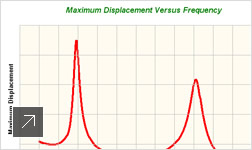
Frequency response
Determine the structural harmonic response based upon frequency-dependent loads. Recover displacement, velocity, acceleration, stress, and strain.
Normal modes analysis provides great insight into the the natural frequencies of the structure, but doesn’t provide accurate displacements or stresses. Identify how a structure responds to a given load across a range of excitation frequencies.
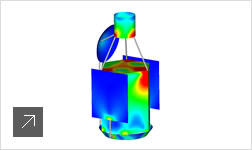
Transient response
Determine the response of a structure through a period of time under the influence of constant or time-dependent loads.
Static analyis will show how a structure will ultimately respond to loading. In the event of impulse loading or other time-dependent loads, structures may behave differently than their end state.Transient response helps you to investigate the behavior of a part on its way to this end result.

Composites
Autodesk Nastran solver provides easy, straightforward handling of complex ply data. Analysis based on latest failure indices, like Puck and LaRC02, means reliable and insightful results.
Progressive Ply Failure Analysis allows for determining how a composite structure responds beyond first ply failure. 3D solid composite element allows for accurately capturing transverse shear in composite structures.
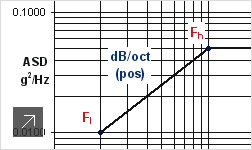
Random response
Analyze the structural behavior in response to the imposition of random dynamic loads. Examples of conditions that can be simulated include road vibration, wave cycles, engine vibration, and wind loads.

Static fatigue
Determine the durability of structures under repeated loading, including low- and high-cycle fatigue. Loading can be simple or multiaxial.
Durability of structures can be measured by the number of cycles to failure or the cumulative damage. Loads causing damage can come from a variety of different sources. Rainflow calculations are used to capture and characterize the loading, then report estimated durability of the structure.

